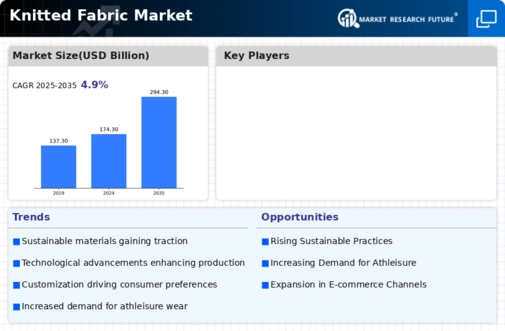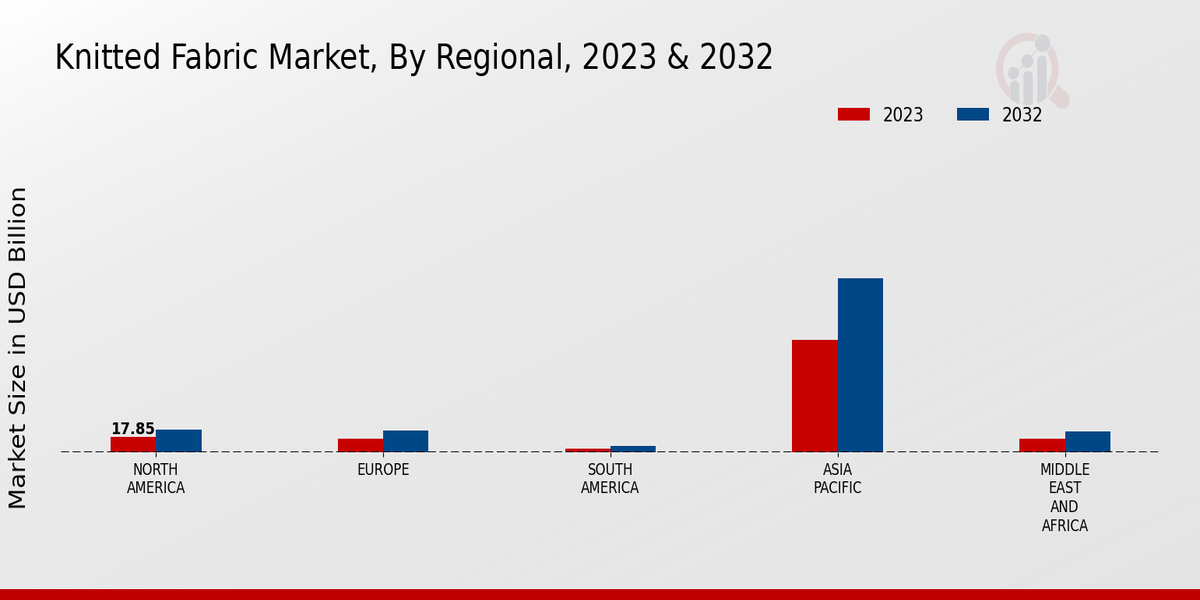Market Trends and Growth Projections
Rising Demand for Sustainable Fabrics
The Global Knitted Fabric Market Industry experiences a notable shift towards sustainability, driven by increasing consumer awareness regarding environmental issues. As consumers become more conscious of their purchasing decisions, the demand for eco-friendly knitted fabrics, such as organic cotton and recycled polyester, is on the rise. This trend is reflected in the industry's growth, with the market projected to reach 174.3 USD Billion in 2024. Manufacturers are responding by innovating sustainable production methods and materials, which not only cater to consumer preferences but also align with global sustainability goals. This shift towards sustainability is likely to shape the future landscape of the Global Knitted Fabric Market Industry.
Growth of E-commerce and Online Retail
The rise of e-commerce and online retail platforms significantly influences the Global Knitted Fabric Market Industry. As consumers increasingly turn to online shopping for convenience and variety, the demand for knitted fabrics is expected to surge. E-commerce platforms provide manufacturers with a broader reach, allowing them to showcase their products to a global audience. This trend is particularly evident in the fashion industry, where online retailers are expanding their knitted fabric offerings. The convenience of online shopping, combined with the growing trend of personalized fashion, is likely to propel the market forward, contributing to the anticipated growth in the coming years.
Expanding Applications Across Various Sectors
The versatility of knitted fabrics contributes significantly to the expansion of the Global Knitted Fabric Market Industry. These fabrics find applications in diverse sectors, including apparel, home textiles, and technical textiles. For instance, the growing trend of athleisure has led to an increased demand for knitted fabrics in sportswear, while the home furnishing sector increasingly utilizes knitted textiles for upholstery and decorative purposes. This broad range of applications is likely to drive market growth, with projections indicating that the market could reach 294.3 USD Billion by 2035. The adaptability of knitted fabrics to various uses underscores their importance in the Global Knitted Fabric Market Industry.
Technological Advancements in Fabric Production
Technological innovations play a crucial role in enhancing the efficiency and quality of knitted fabric production within the Global Knitted Fabric Market Industry. Advancements such as automated knitting machines and digital textile printing are revolutionizing the manufacturing process, allowing for greater customization and reduced production times. These technologies enable manufacturers to respond swiftly to market trends and consumer demands. As a result, the industry is expected to witness a compound annual growth rate of 4.87% from 2025 to 2035. The integration of technology not only improves productivity but also enhances the overall quality of knitted fabrics, thereby attracting a broader consumer base.
Increased Investment in Fashion and Textile Industries
Investment in the fashion and textile industries is a key driver for the Global Knitted Fabric Market Industry. As global economies recover and consumer spending increases, brands are allocating more resources towards innovative fabric development and design. This influx of investment fosters creativity and technological advancements, enabling manufacturers to produce high-quality knitted fabrics that meet evolving consumer preferences. The focus on innovation is expected to enhance the competitive landscape of the industry, attracting new players and driving market growth. As a result, the Global Knitted Fabric Market Industry is poised for substantial expansion in the coming years.











